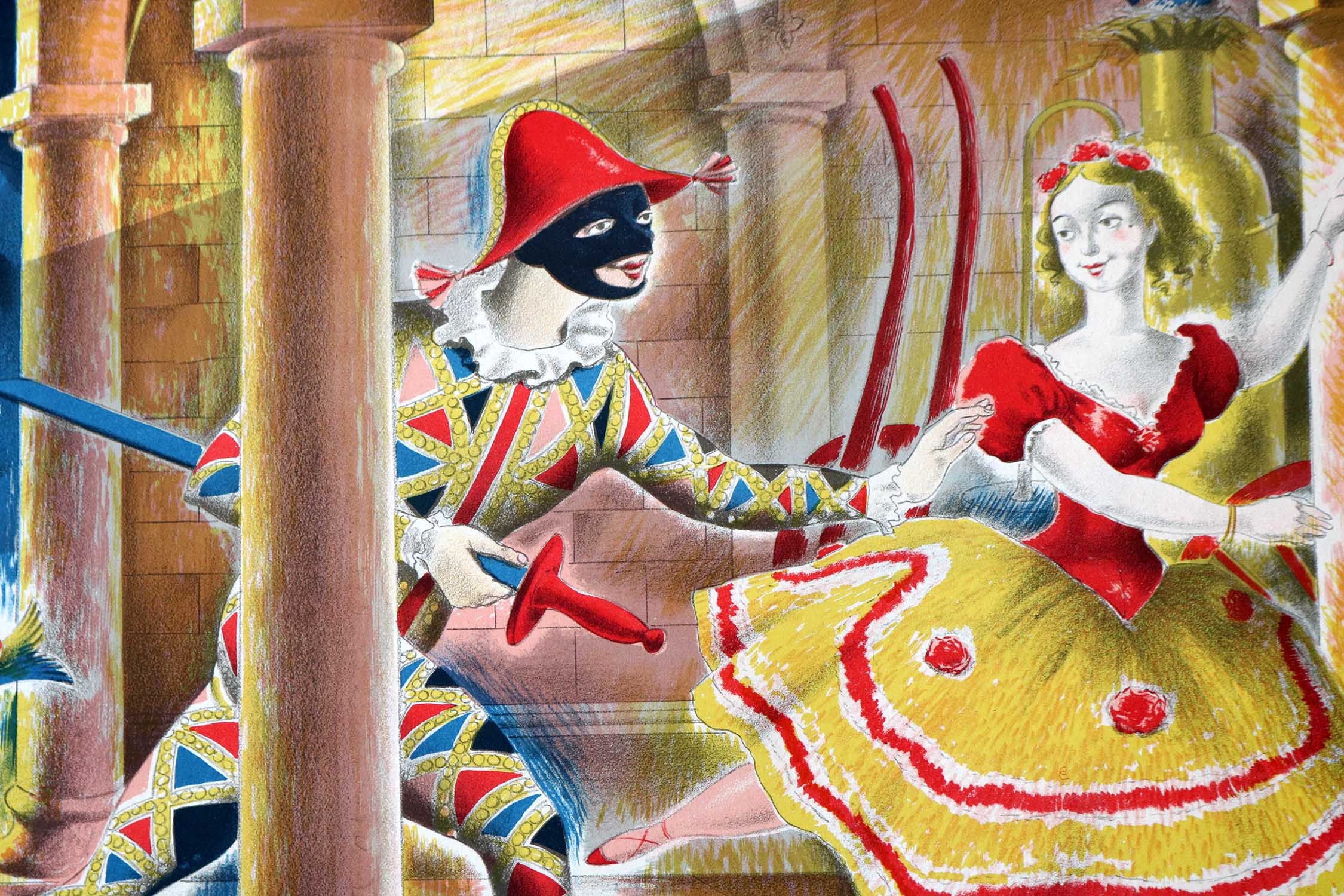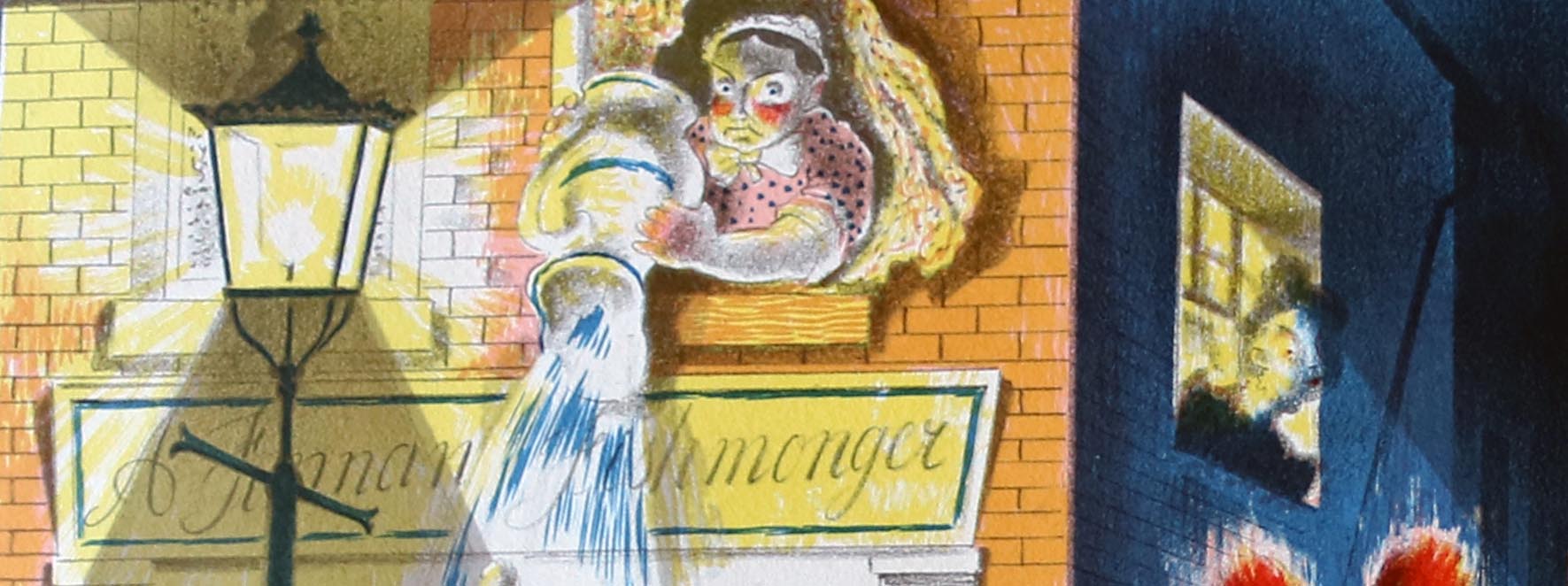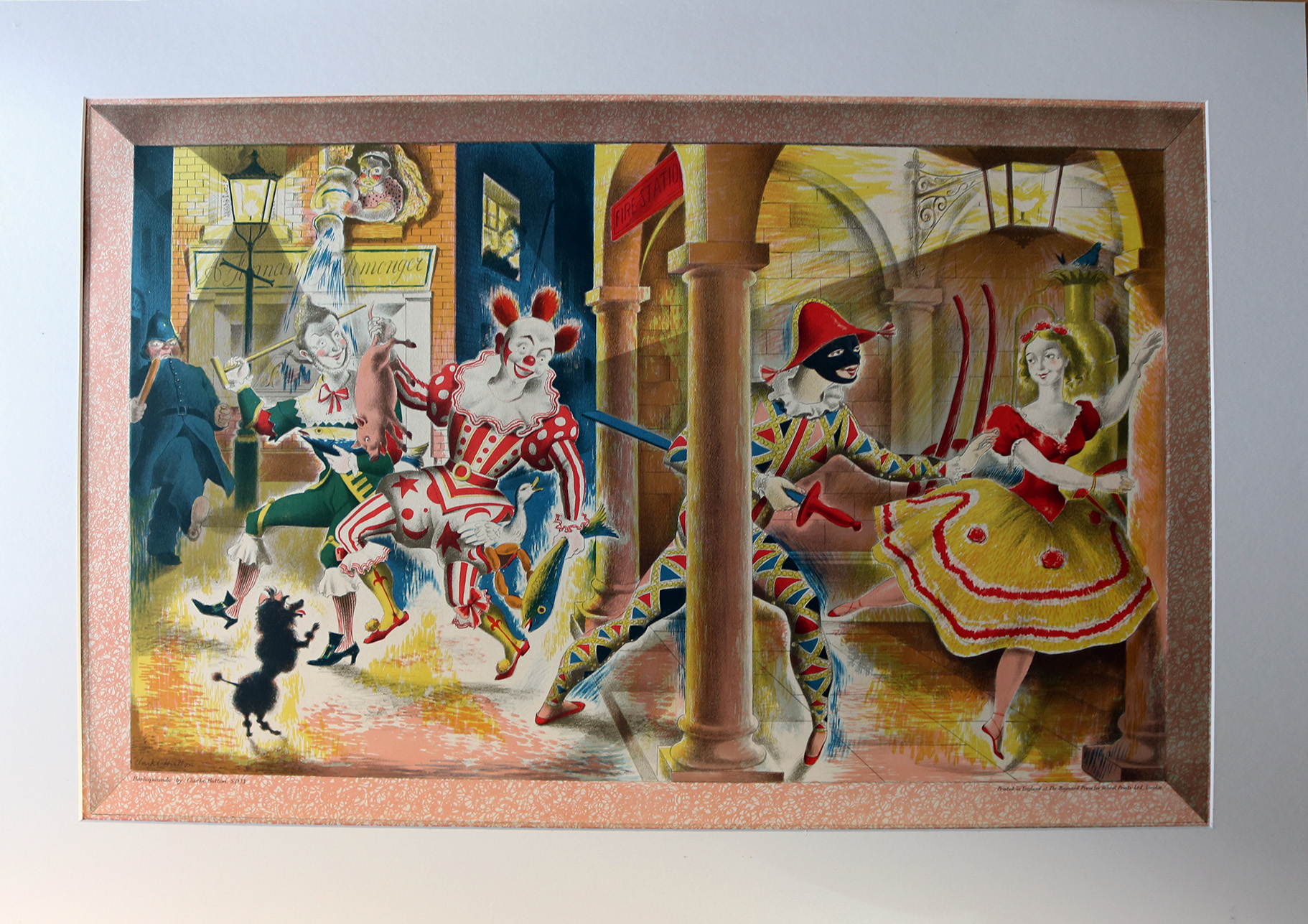SCHOOL PRINTS: Clarke Hutton (1898 – 1984) for School Prints “Harlequinade”, 1946








Clarke Hutton (1898 – 1984) for School Prints “Harlequinade”, 1946, lithograph on paper, with printed signature to margin printer credit details “Harlequinade by Clarke Hutton S.P.13 Printed in England at The Baynard Press for School Prints Ltd., London”, mounted.
School Prints Ltd.
The School Prints series was produced from 1946 to 1949, and was devised by arts campaigner Brenda Rawnsley (1917 – 2007).
School Prints Ltd. was founded by Brenda Rawnsley’s husband Derek Rawnsley in 1935, to allow primary schools to hire prints of old master paintings. Derek Rawnsley tragically died in an aeroplane accident in 1943. By the end of the Second World War, Brenda Rawnsley, (having herself served as an Intelligence Officer and subsequently Squadron Leader during World War II) decided to continue with the concept of School Prints, but take it in a new direction.
The new aim would to provide primary schools with original lithographic examples of contemporary art. Rather than hiring prints, the School Prints series were to be affordable enough for schools to purchase. Instead of copying existing works, artists would be commissioned to produce unique designs on subjects understandable to children. Design was also integral; each print featuring a frame motif around the outside so that they could simply be attached to classroom walls. Additionally all were produced in identical sizes, so they could be interchanged in a single frame.
Rawnsley said of the series (when first writing to the chosen artists): “We are producing a series of auto-lithographs, four for each term, for use in schools, as a means of giving schoolchildren an understanding of contemporary art. By keeping the price as low as possible, we are able to bring this scheme within the reach of all education authorities.“
Initially the series was a success; post-war optimism combined with the appeal of promoting children’s education resulted in artists willing to contribute their work. Knowing only a little about art Rawnsley selected the artists together with a group chaired by art historian Herbert Read. L.S. Lowry, John Nash and Henry Moore, to name but a few, all contributed works to the series.
By 1948 Rawnsley had managed to sign up a number of European artists including Pablo Picasso, Raoul Dufy and Henri Matisse. The European series however proved too adventurous for the audience and subsequently production ceased in 1949.
For further examples of work in the series visit the store:
SCHOOL PRINTS: John Tunnard (1900 – 1971) for School Prints Ltd. “Holiday”, 1947
The Artist
Artist Stanley Clarke Hutton (British, 1898 – 1984) was initially a stage designer, but decided to become an artist after a trip to Italy during the 1920s. Clarke Hutton (as he was known as an artist) specialised in auto-lithography (where the artist draws on the plate directly), and eventually taught the subject at Central School of Arts and Crafts, London. Often working in children’s book illustration, Hutton was hugely important for Penguin Books in the development of the Puffin imprint. He worked with a range of other publishers including the Oxford University Press, The Folio Society and Chatto & Windus.
In 1943 Clarke Hutton illustrated a book entitled “Harlequinade”, the artwork for which is very similar to this print. The “Harlequinade” was an early form of pantomime adapted from Comemedia dell’arte. The principle characters here include the beautiful Columbine, her love Harelquin, a clown, pantaloon and a policeman, as was typical.
An example of this print can be found in the Victoria & Albert Museum collection, the Tate archive and the Warwick University collection.
For more information on this print see the V&A collection https://collections.vam.ac.uk/item/O141017/harlequinade-print-hutton-clarke/
Dimensions: Within mount 495mm x 759mm.
SOLD OUT
Make an enquiryShipping: Price includes free shipping within M25 and South East England. If you are based outside of this area please email us directly for a cost price shipping quote.
Condition Report: In very good overall condition, slight nick to lower edge not visible when mounted, otherwise good.